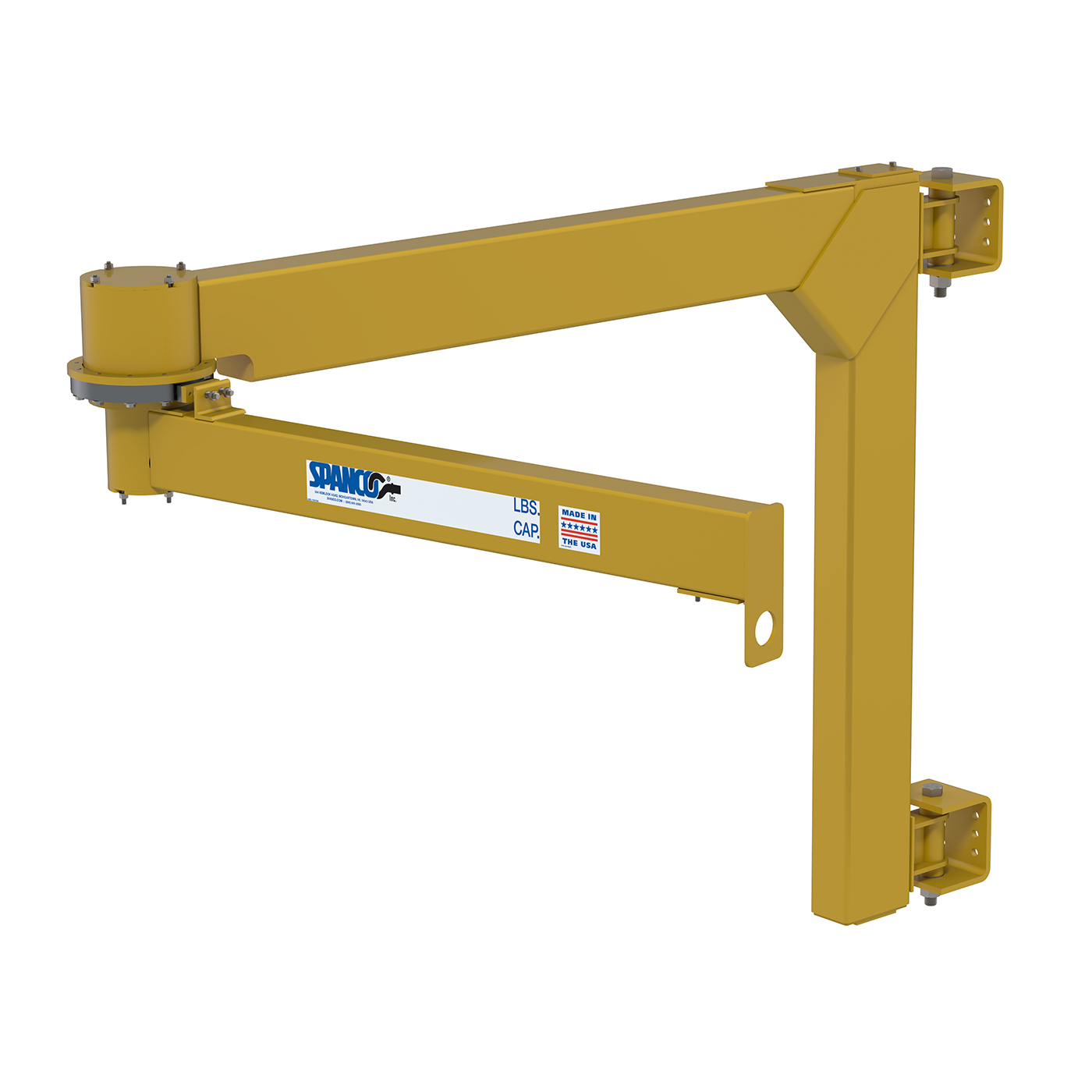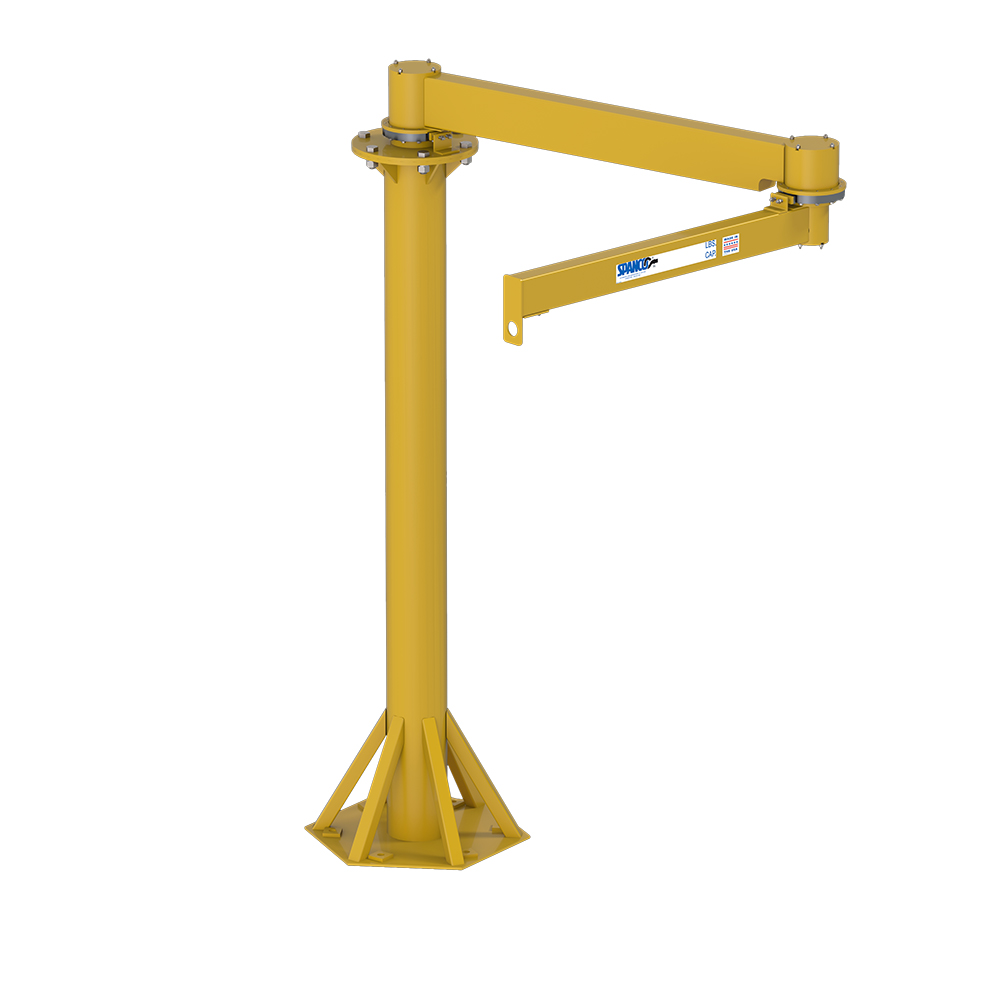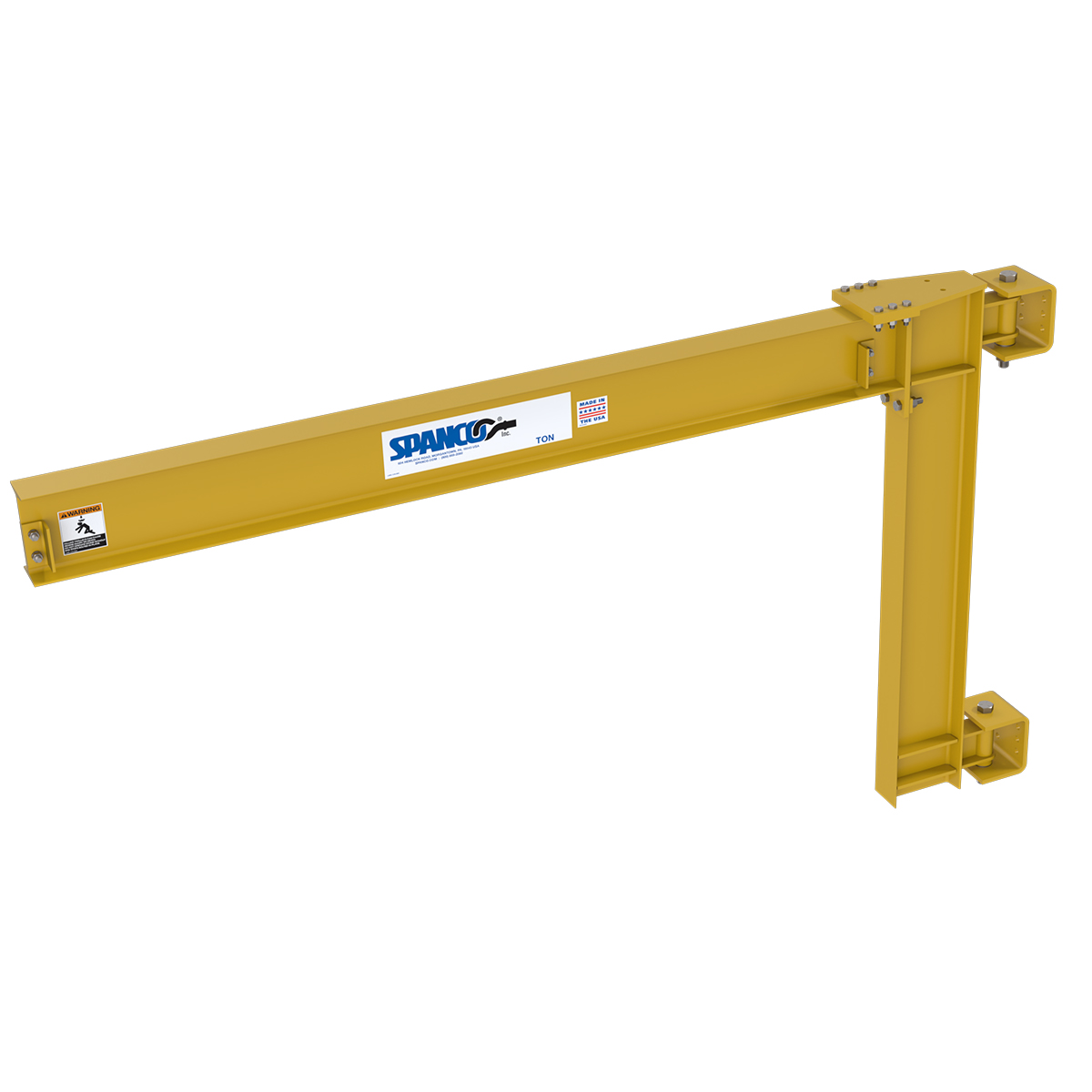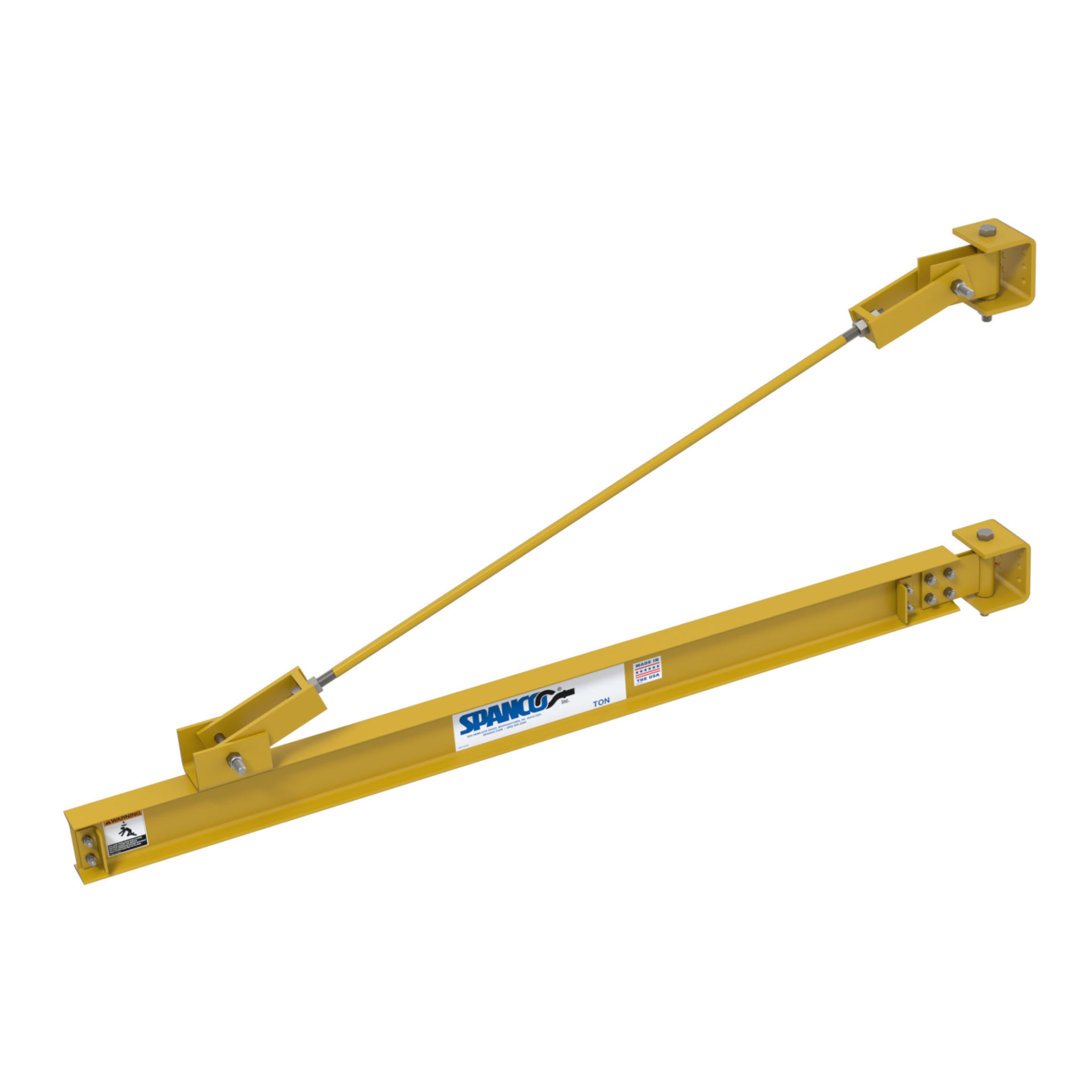Transit Company Uses Eight Spanco Jibs To Improve Maintenance Production and Ensure Worker Safety
Products used
Overview
A regional public transit service in Toronto, Canada that provides provisional and municipal trains to the general public has been expanding its services for more than 40 years. As the regional public transit service for the Greater Toronto and Hamilton Area, routes are extending to communities across the Greater Golden Horseshoe. This particular regional public transit service now carries 65 million passengers a year.
Since May 1967, the transit’s evolution has gone from a single line along the shoreline of Lake Ontario to an extensive network of trains and bus routes. The transit estimates that since its services began, more than a billion riders have used their services. As the transit continues to expand to cover downtown Toronto and other urban areas, it’s manufacturing and maintenance facilities must also expand to make future growth possible.
That’s’ why, in 2013, the Transit reached out to a local Spanco dealer, Toronto Electric, to inquire about maximizing the use of their facilities and improving productivity in maintenance. In one of their Willowbrook maintenance facilities, workers were in desperate need of a proper material handling solution for train maintenance. A year later, the transit service invested in four Spanco Freestanding Articulating Jib Cranes to increase maintenance efficiency, and improve productivity and worker safety. The articulating jib arms are used at the front of the trains to reach between cars and move heavy electrical cables in and out of place.
Solution
The articulating jib cranes are baseplate-mounted to unplug 50-pound cables from the front of the trains so that workers can safely access mechanics without fear of being electrocuted. Lifting the heavy cables, which generally come in sets of three or more, is not only grueling work, but it can also be dangerous and time consuming. The articulating jib cranes are 500 pounds in capacity and span 6 feet—3.5 on the inner arm, which rotates 200 degrees, and 2.5 on the outer arm, which rotates 360 degrees.
Spanco had to customize the freestanding articulating jib cranes to include 36 coupling nuts, equally spaced 4 inches apart along the mast and on both sides of the boom, to run a group of cables from the floor to the top of the boom.
According to a dealer at Toronto Electric, “When the trains pull in and they disconnect cars from the locomotive, they use the articulating jib arms at the front of the crane to move the heavy electrical cables. The cranes use custom rings (brackets) that run along side the boom” (as described above).
For the sides of the car, the Willowbrook Maintenance Facility purchased and installed four wall-mounted jib crane, each with ½-ton capacity spanning 10 feet. These cranes also included the custom coupling nuts spaced as far apart as possible on the underside of the boom to run the group of cables to the top of the boom. When the trains pull in and workers have to disconnect and connect cables from the sides of the of the cars, they use the tie-rod mounted jib crane to move three sets of the 75 pound, 2-inch diameter cables and run them along the boom using the custom brackets.
Once the cables are safely out of the way, workers can quickly conduct routine maintenance and service to each cable car without cable interference or the time and energy it requires to unhook, lift, and mount the cables. Once maintenance work is complete, the cranes are again used to dismount, lift, and plug the cables back into the cars. The cables provide electricity, so once they’re reintroduced to the system the car is ready to go.
Impact
Once the cables are safely out of the way, workers can quickly conduct routine maintenance and service to each cable car without cable interference or the time and energy it requires to unhook, lift, and mount the cables. Once maintenance work is complete, the cranes are again used to dismount, lift, and plug the cables back into the cars. The cables provide electricity, so once they’re reintroduced to the system the car is ready to go.
Since the incorporation of the four articulating jib cranes and four wall-mounted jib cranes from Spanco, workers are no longer tasked with the dangerous job of manually lifting long, heavy, 2-inch diameter cables to attach and detach cables to the front and sides of cable cars all day long, day in and day out. Productivity has improved greatly and safety is no longer a concern for workers in charge of moving cables and other heavy electrical components from place to place.
The Toronto based Transit company was created to improve the coordination and integration of all forms of transportation in the area. Their mission is to implement a transportation system for the region that will enhance prosperity, sustainability, and quality of life. Spanco Jib Cranes have helped them to deliver long-term sustainable transportation and a seamless, integrated transit network for the general public to access quickly and easily.




